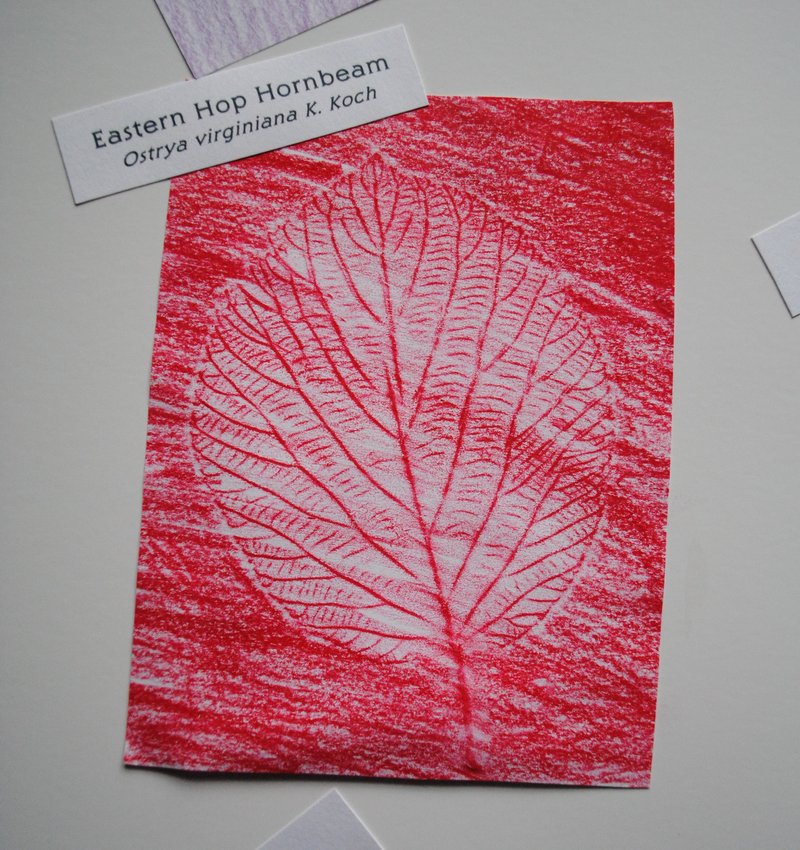When the fall colors start emerging on trees, the leaves become irresistible collectibles for kids.
When my girls were preschoolers we’d take a short hike and end up with a big stack of leaves collected off the ground that just had to be brought home.
Once the pretty colored leaves made their way into our house, the kids would ask me to help make something out of them. This prompted me to find some creative seasonal crafts that, even as teens, the girls still enjoy doing at this time of year.
Wax pressing: This technique I learned as a child is still one of the easiest, low-tech ways to preserve the colors of fall in their most natural state.
Put a flat leaf between two pieces of wax paper. The wax paper should be about a half-inch larger than the leaf around the perimeter. Lay a thin dishcloth over the wax paper (thin cloth is key to ensuring even, low heat during pressing).
Use an iron on a low heat setting and iron over the cloth, being sure to gently press the iron over the entire leaf.
Some people prefer to seal the edges of wax paper with the leaf inside. My kids don’t like the look of the leaf in the wax paper, so they take the leaf out. There is a thin layer of wax left on the leaf when removed from the wax paper and this is what helps preserves it.
But I should mention that ironing leaves is a semi-smelly business. The heated leaf offers up an earthy smell that takes a while to dissipate.
My kids like to make collages with the leaves and put them in matted glass frames. It offers a nice finished look and preserves the leaves for at least a couple of seasons.
Crayon rubbings: The girls got into leaf rubbings when they were in elementary school. I waited to introduce this method, because it can be tricky to make a rubbing.
The only items required for rubbing are lightweight, white paper and thick crayons with the paper label removed (the larger, toddler crayons work great if you have them).
After the kids find a leaf they like, help them find a flat surface. If we’re out on the trail, we look for a big rock that is a bit larger than the leaf they want to rub. When around home, a cement step works great.
Put the leaf on the rock and place the paper over it. Mom or Dad can help by holding two corners of the paper to keep it and the leaf in place. Without parental help, kids can get frustrated with the blurry image that results from the leaf moving around as the crayon is rubbed on the paper.
I always tried to pack a full array of colors in the kids’ backpacks to ensure a varied ensemble of rubbings to bring home from the trail.
For older kids in need of a science project for school — or for Scouts or 4-H displays — my daughters can attest that a poster of leaf identifications with the rubbings can be colorful and informative.
Leaf impressions: This is a simple way to create art with leaves. You only a need a piece of white cotton fabric and some fabric paint that can be applied with a paint brush.
Kids simply collect a mix of leaf shapes and sizes. Then they paint the surface of a leaf and place it on the fabric paint-side down. Encourage the kids to apply pressure around all of the leaf’s edges to get a clear definition of the shape.
A friend of mine encouraged her kids to press down on the leaf with a paper plate. The kids reported much better impressions of their leaves that way than using hands-only pressure.
Another way to make a leaf impression is to put fabric dye in a spray bottle, place leaves on fabric and spray the dye over the leaves.
Let the dye dry for at least 10 to 15 minutes before removing the leaves to ensure you don’t blur the edges.
It’s a great variation on tie-dyeing, but it’s messy, so dress the kids accordingly.
Collecting two thick sticks and affixing the fabric to them like a scroll offers a festive, natural fall display.
Leaf ID notebook: Encouraging kids to start a leaf-collecting notebook not only helps them organize their collections each season, it minimizes the space needed to display them in your house.
My kids made their own collection notebooks by folding pieces of white paper and sewing the left edge with embroidery floss to make a simple binding.
They put each collected leaf on its own page. They can choose to use the wax paper method to preserve the leaf, make a rubbing or just glue it in as it is.
The key to using an untreated leaf is to make sure the notebook is placed under a heavy book overnight to keep the leaf from curling while it’s drying.
As my kids got older, I encouraged them to write in the type of tree the leaf came from, using our tree identification book, as well as the place they found the leaf. It has been a great way to practice their tree ID skills and reminisce about our hikes together.
No matter the method you use to collect and display fall leaves, this time of year offers plenty of creativity and learning. Leaf collection is a simple and wonderful way to help your child explore the natural environment.
Staff Writer Wendy Almeida can be contacted at 791-6334 or at:
wea@mainetoday.com
Twitter: RaisingMaine
Send questions/comments to the editors.


